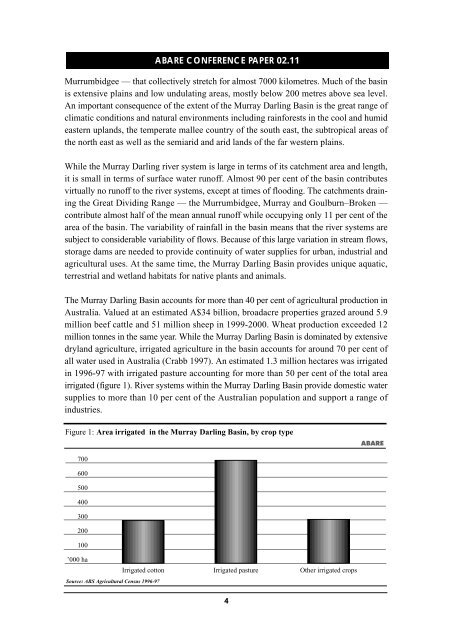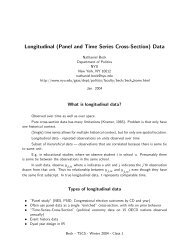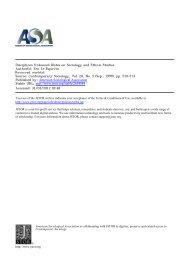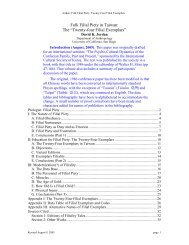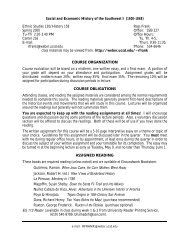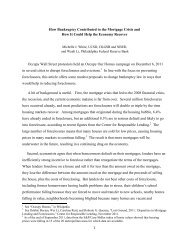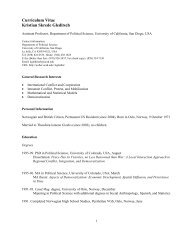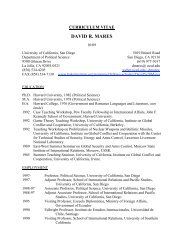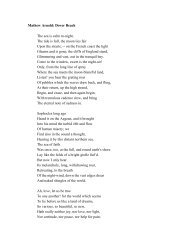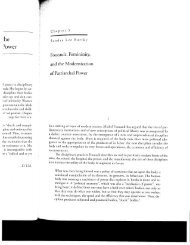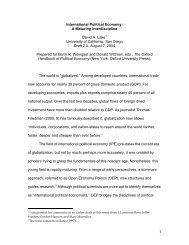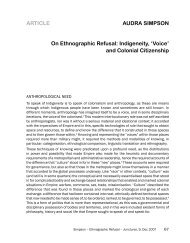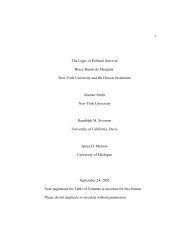Climate change and water resources in the Murray Darling Basin ...
Climate change and water resources in the Murray Darling Basin ...
Climate change and water resources in the Murray Darling Basin ...
You also want an ePaper? Increase the reach of your titles
YUMPU automatically turns print PDFs into web optimized ePapers that Google loves.
ABARE CONFERENCE PAPER 02.11<br />
Murrumbidgee — that collectively stretch for almost 7000 kilometres. Much of <strong>the</strong> bas<strong>in</strong><br />
is extensive pla<strong>in</strong>s <strong>and</strong> low undulat<strong>in</strong>g areas, mostly below 200 metres above sea level.<br />
An important consequence of <strong>the</strong> extent of <strong>the</strong> <strong>Murray</strong> Darl<strong>in</strong>g Bas<strong>in</strong> is <strong>the</strong> great range of<br />
climatic conditions <strong>and</strong> natural environments <strong>in</strong>clud<strong>in</strong>g ra<strong>in</strong>forests <strong>in</strong> <strong>the</strong> cool <strong>and</strong> humid<br />
eastern upl<strong>and</strong>s, <strong>the</strong> temperate mallee country of <strong>the</strong> south east, <strong>the</strong> subtropical areas of<br />
<strong>the</strong> north east as well as <strong>the</strong> semiarid <strong>and</strong> arid l<strong>and</strong>s of <strong>the</strong> far western pla<strong>in</strong>s.<br />
While <strong>the</strong> <strong>Murray</strong> Darl<strong>in</strong>g river system is large <strong>in</strong> terms of its catchment area <strong>and</strong> length,<br />
it is small <strong>in</strong> terms of surface <strong>water</strong> runoff. Almost 90 per cent of <strong>the</strong> bas<strong>in</strong> contributes<br />
virtually no runoff to <strong>the</strong> river systems, except at times of flood<strong>in</strong>g. The catchments dra<strong>in</strong><strong>in</strong>g<br />
<strong>the</strong> Great Divid<strong>in</strong>g Range — <strong>the</strong> Murrumbidgee, <strong>Murray</strong> <strong>and</strong> Goulburn–Broken —<br />
contribute almost half of <strong>the</strong> mean annual runoff while occupy<strong>in</strong>g only 11 per cent of <strong>the</strong><br />
area of <strong>the</strong> bas<strong>in</strong>. The variability of ra<strong>in</strong>fall <strong>in</strong> <strong>the</strong> bas<strong>in</strong> means that <strong>the</strong> river systems are<br />
subject to considerable variability of flows. Because of this large variation <strong>in</strong> stream flows,<br />
storage dams are needed to provide cont<strong>in</strong>uity of <strong>water</strong> supplies for urban, <strong>in</strong>dustrial <strong>and</strong><br />
agricultural uses. At <strong>the</strong> same time, <strong>the</strong> <strong>Murray</strong> Darl<strong>in</strong>g Bas<strong>in</strong> provides unique aquatic,<br />
terrestrial <strong>and</strong> wetl<strong>and</strong> habitats for native plants <strong>and</strong> animals.<br />
The <strong>Murray</strong> Darl<strong>in</strong>g Bas<strong>in</strong> accounts for more than 40 per cent of agricultural production <strong>in</strong><br />
Australia. Valued at an estimated A$34 billion, broadacre properties grazed around 5.9<br />
million beef cattle <strong>and</strong> 51 million sheep <strong>in</strong> 1999-2000. Wheat production exceeded 12<br />
million tonnes <strong>in</strong> <strong>the</strong> same year. While <strong>the</strong> <strong>Murray</strong> Darl<strong>in</strong>g Bas<strong>in</strong> is dom<strong>in</strong>ated by extensive<br />
dryl<strong>and</strong> agriculture, irrigated agriculture <strong>in</strong> <strong>the</strong> bas<strong>in</strong> accounts for around 70 per cent of<br />
all <strong>water</strong> used <strong>in</strong> Australia (Crabb 1997). An estimated 1.3 million hectares was irrigated<br />
<strong>in</strong> 1996-97 with irrigated pasture account<strong>in</strong>g for more than 50 per cent of <strong>the</strong> total area<br />
irrigated (figure 1). River systems with<strong>in</strong> <strong>the</strong> <strong>Murray</strong> Darl<strong>in</strong>g Bas<strong>in</strong> provide domestic <strong>water</strong><br />
supplies to more than 10 per cent of <strong>the</strong> Australian population <strong>and</strong> support a range of<br />
<strong>in</strong>dustries.<br />
Figure 1: Area irrigated <strong>in</strong> <strong>the</strong> <strong>Murray</strong> Darl<strong>in</strong>g Bas<strong>in</strong>, by crop type<br />
700<br />
600<br />
500<br />
400<br />
300<br />
200<br />
100<br />
’000 ha<br />
Irrigated cotton<br />
Source: ABS Agricultural Census 1996-97<br />
Irrigated pasture<br />
4<br />
O<strong>the</strong>r irrigated crops


